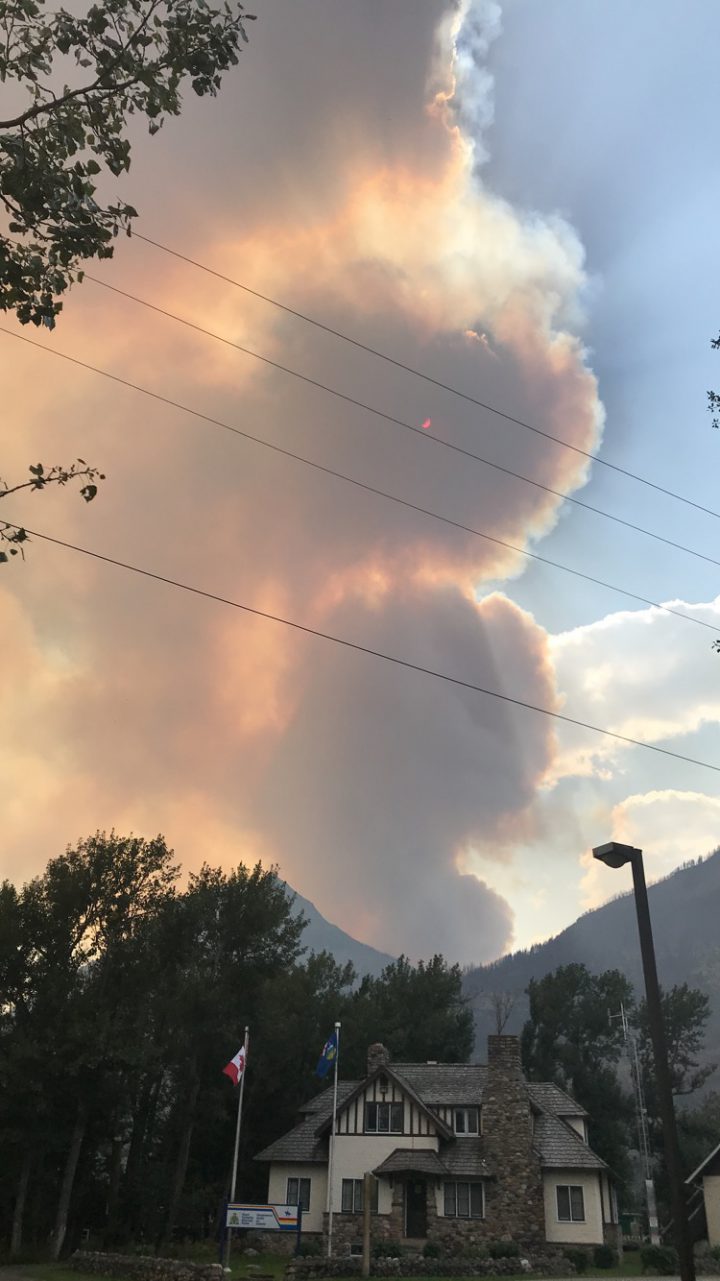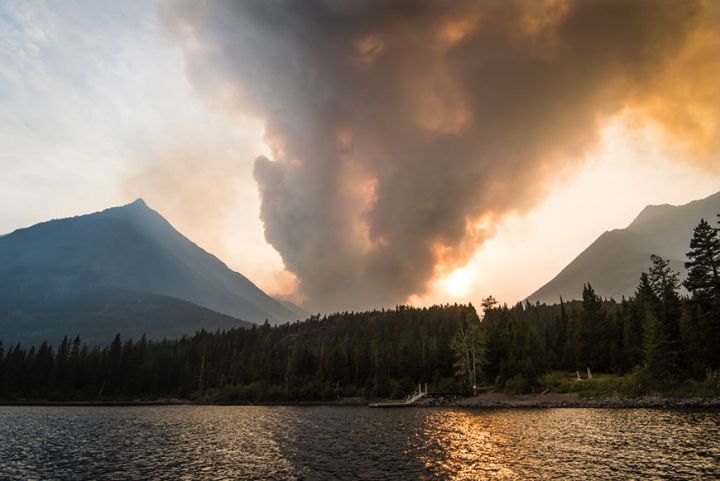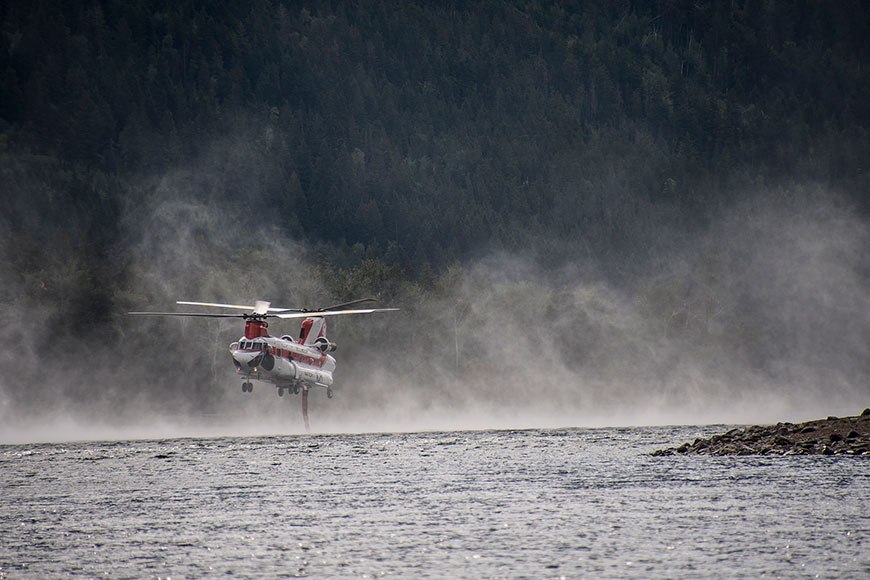The Boundary wildfire burning in Montana’s Glacier National Park spilled over into Canada on Friday, triggering “extreme fire behaviour” in Waterton Lakes National Park.

Dry and windy conditions flared up fire activity on the blaze at about 3 p.m.
The wildfire then jumped the border into Alberta, burning “most of the basin on the southwest-facing slope of Mount Richards and the south- and east-facing slopes of Mount Alderson,” according to an advisory from Parks Canada.
Coverage of wildfires on Globalnews.ca:
The advisory went on to say that two spot fires are burning in the fire’s east perimeter in the valley.
Crews used a helicopter to bucket water the fire on its east perimeter in the afternoon.
Fire activity has died down since then, with helicopters tackling the blaze’s east perimeter, working to hold it at an avalanche path.
The weather forecast called for high winds and “slightly cooler temperatures” on Saturday.
- Invasive strep: ‘Don’t wait’ to seek care, N.S. woman warns on long road to recovery
- Ontario First Nation declares state of emergency amid skyrocketing benzene levels
- Do Canadians have an appetite for electric vehicles? Experts are divided
- Nearly 200 fossil fuel, chemical lobbyists to join plastic treaty talks in Ottawa
Minimal rain did not substantially suppress the fire and hot spots remain on the wildfire’s east perimeter, a Parks Canada news release said on Saturday.
On Saturday morning, Parks Canada helicopters bucketed water on those hot spots hoping to hold the fire at an avalanche path in the Boundary Valley.
Crews will keep working to hold the wildfire at the avalanche path and develop a GPS perimeter of the blaze.
Parks Canada said Saturday that “aerial suppression continued until dark” with three Parks Canada helicopters and one U.S. heavy helicopter bucketing water on the fire.
“This suppressed fire activity on hot spots and limited further fire growth, despite the windy conditions,” the news release said.
Wind speed dropped overnight and so did temperatures as relative humidity rose which resulted in “decreased fire activity,” Parks Canada said on Sunday.
The agency said that smoke and smoldering were noted in the morning, but no open flame.
The wildfire has been burning since Aug. 23 and is estimated to be 1,100 hectares in size, affecting Boundary Creek Valley, Glacier National Park and Water Lakes National Park. On Sunday, it went from “out of control” status to 12 per cent contained with “no anticipated growth.” On Monday, Parks Canada said the fire was 14 per cent contained.
Park users cannot currently access the Lakeshore Trail, the Bertha Lake Trail, nor the Bertha Lake and Bertha Bay Backcountry Campgrounds.
IN PHOTOS: The Boundary Wildfire
The Boundary wildfire was earlier blamed for sparking a separate spot fire in Canada on Friday.
“It’s believed embers from the middle of the Boundary fire burning in Glacier National Park have triggered the spot fire in Canada,” said Penny Bertram, incident information officer with the Northern Rockies Management Team in Montana.
Thick black smoke could been seen rolling over the mountain into Waterton Village, within Waterton Lakes National Park.
The spot fire was about 100 acres in size, but Bertram said officials weren’t too worried about it spreading as of 5 p.m. MT because it was in a “backcountry bowl” surrounded by rock.


































Comments